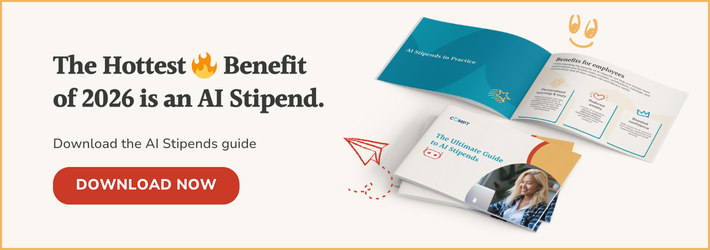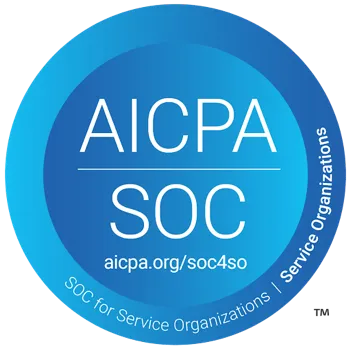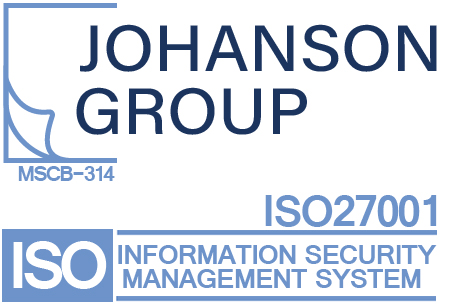If you’re feeling the pressure to “do something” about AI, you’re not alone. Right now, the C-suites want AI results — fast, and every department feels the heat.
Just look below at what a few CEOs are mandating:
- Shopify: CEO Tobi Lütke called effective AI use a “baseline expectation” for all employees. Teams must even prove AI can’t fulfill a role before hiring new people.
- Uber: CEO Dara Khosrowshahi announced that within a year, AI skills will be mandatory.
- Duolingo: Expects employees to use AI proficiency as part of evaluation and hiring. Their “AI‑first strategy” now embeds AI-driven tasks and performance metrics into the workforce.
- Zapier: Now screens for AI-fluency during hiring.
And they’re not the only ones.
But while leadership raises the bar, employees are feeling shaky. In May, employee confidence hit its lowest point, with only 44.1% feeling positive about their six-month outlook. The gap between leadership expectations and employee ability is growing.
So while some technical teams sprint ahead on their adoption of AI, the real future of work won’t be won by tools alone — it will be won by people.
And in 2025, helping employees adopt and use AI isn’t a nice-to-have — it’s essential for your business. As Andy Biladeau, SHRM’S Chief Transformation Officer said:
“HR does not exist to drive HR. HR exists to drive business outcomes.”
That’s why we created this guide on everything you need to know about the most strategic investment HR can make today: AI stipends.
What is an AI stipend?
Definition:
An AI stipend is an employer-funded benefit that gives employees a fixed amount to spend on AI tools, apps, training, or services that enhance their productivity and professional growth.
It can cover:
- Subscriptions like ChatGPT Pro, Perplexity, Enari, Coefficient
- Prompt libraries and research
- Online courses and certifications in AI, or prompt engineering
- AI-powered note-taking, design, and writing tools like Fathom, Granola, Jasper, Copy.AI
Also known as AI tools stipends, innovation funds, or upskilling allowances, these are typically distributed monthly, quarterly, or annually, and depending on how they are designed, they can be a nontaxable or taxable benefit.
Example:
Buffer provides a $250/year AI Tools Stipend. They describe it this way:
“We noticed inconsistencies in AI tool reimbursements. The stipend lets us support innovation in a structured, fair way.”
Why AI stipends matter
According to IBM’s 2025 CEO Study, 54% of CEOs say their organizations are now hiring for AI-related roles that didn’t exist a year ago. This means that HR will not only need to fill new AI roles fast, but that upskilling your existing workforce has become more critical than ever.
That was highlighted by a recent HRD article, which had this to say:
HR teams are adopting AI at speed—but they’re hitting a wall. According to Capterra’s 2025 survey of over 3,000 HR leaders, 43% say their teams lack the skills to use AI effectively…”
Every day it becomes more and more clear that AI literacy gaps are an existential risk for businesses.
AI stipends address the rapid pace of change and future-proof your company (and employees’ careers) by giving employees structured, self-directed ways to experiment, learn, and grow with AI, while maintaining oversight and minimizing risk.
Benefits for employees
Personalized learning & tools
Different teams and roles need different tools. A marketer may prefer Jasper; an analyst may lean into ChatGPT Pro. AI stipends empower tailored skill development.
Boosted confidence
With access to AI resources and training, employees feel supported (instead of left behind).
Reduced anxiety
In times of uncertainty, offering upskilling pathways shows a commitment to employee growth and career resilience.
Benefits for employers
Avoiding tool chaos
Stipends centralize AI spend, while still giving employees freedom to experiment.
Better ROI on AI initiatives
ROI is higher when employees choose what’s useful and relevant, versus a traditional approach of generic enterprise licenses.
The company example mentioned above, Buffer, had this to say about how they’re seeing value in their AI Tool Stipend already:
We already have some early success stories:
- Customer Advocacy Team: Exploring ways to enhance customer interactions with AI support.
- Content Team: Experimenting with AI for research and ideation while maintaining our unique voice. The stipend is already having an impact here as our content writer, Tami, wrote an article detailing an experiment with five AI chatbots and how they might fit into creators’ workflows.
- Engineering Team: Boosting productivity through AI-assisted coding.
Talent magnet
The 2024 WorkHuman IQ Survey found that those who are using and familiar with AI are 2x more likely to recommend their company to others.
Investing in future-oriented development is a big win for attracting and retaining forward-thinking professionals, which has again become a top priority of organizations.
Strengthened upskilling pathways
CEOs expect returns from AI with 61% anticipating firmwide benefits from AI agents, but HR needs scalable methods. AI stipends offer one such path.
To make your AI stipend initiative truly impactful, take it from HR veteran, Kim Rohrer – Founder of Patchwork Portfolio, author of the I Care Too Much newsletter, and co-host of the HR Confessions podcast.
“The important thing is not just to give your employees money to spend on AI tools, but to help them understand ways to integrate it into their work. While many are early-adopters who will excitedly apply this benefit to things they’re already working on, to some, even deciding where to spend their budget might seem overwhelming or intimidating. Help employees learn by setting expectations for where you’d like to see them using AI, suggest resources for self-guided learning, and set up group “sandbox” time to make learning fun and collaborative.”
Faster and better innovation in your business
One of the main concerns on every CEO’s mind right now is, “What are we doing for AI?”
If you’re a software business, it’s likely your CEO is pushing — if not demanding — that the product team integrate AI into your software, and fast.
At the same time, they’re also concerned about competitors who are ahead of the curve in adopting AI.
And their concerns are backed by research. A recent Harvard study revealed that “individuals and teams using AI worked 12-16% faster than the ones without AI and produced longer and more detailed solutions.”
This means that competitors embracing AI will be able to deliver more, faster, and better. For CEOs (yours included), there’s no greater win than launching a program that encourages and motivates the team to learn, experiment, and use AI to enhance their work and drive business results.
As Amy Spurling, CEO of Compt, put it: “If AI is your biggest investment this year, your second should be helping your team adapt to it. AI is already reshaping work. Your benefits better help your people keep up or they’ll find an employer who does.“
This is why AI stipends are the answer.
By addressing the CEO’s top concern — AI adoption — HR can solve a critical business challenge while demonstrating vision, innovation, and the ability to execute on high-impact initiatives, positioning yourself as a key player in driving the company’s future success. Talk about being strategic!
What employees can spend an AI stipend on
The most common use case we’ve seen from our customers has been their AI stipends being spent on tools. However, depending on how you design your program, it can go beyond tools, and cover prompt libraries, AI courses, or hiring AI experts to help managers automate workflows.
Below is a short list of what we’ve seen customers spend their AI stipends on:
- ChatGPT Plus/Pro, Jasper, GrammarlyGO
- Prompt libraries and research tools
- Online courses & certifications (Udemy, LinkedIn, Coursera)
- AI note-taking, writing, and design subscriptions (Fathom, Notion AI, Otter.ai)
- Paid AI newsletters or research reports
- Any AI solution aligned with team workflow productivity
Real quotes from employees using AI stipends
Below are real quotes and stories from Compt users highlighting the powerful impact their company’s AI stipend has had on their lives.
- “I used my AI stipend to upgrade to ChatGPT Pro. It’s been a game-changer for my productivity.”
- “I love that my company not only encourages me, but also foots the bill, for my experimentation and evolution in marketing with this AI tools stipend!”
- “It made me feel supported to try new tools without asking for approval every time.”
Are AI stipends taxable?
There’s no specific IRS ruling that directly addresses AI stipends yet. However, depending on how your program is designed, it may fall under existing IRS rules, particularly Working Condition Fringe Benefits (WCFBs).
According to the IRS, a WCFB exclusion applies when:
“The property or services provided enable an employee to perform their job, and would be deductible as a business expense if the employee had paid for them directly.”
This means if the AI tools or training are used solely for business purposes—not for personal development or preparing for a different role—there’s a possibility the stipend may be excluded from taxable income.
To support that position, some employers choose to apply internal guardrails, like:
- Requiring sign-up with a work email address
- Documenting that tools are used for current job duties
- Reserving the right to revoke access or reassign licenses
- Making it clear that the tools are for business use and not personal ownership
That said, many companies take the more conservative route and treat AI stipends as taxable fringe benefits just like other lifestyle stipends. This simplifies administration, avoids audit risk, and ensures full transparency with Finance.
Feeling overwhelmed? We get it. The good news is, Compt helps you configure your AI stipend program to align with IRS guidelines and your internal policies. We’ll help you categorize, track, and report everything so Finance isn’t left sorting it out at year-end.
Please note: Compt supports accurate benefit categorization and payroll integration based on IRS guidelines. We do not provide tax advice. Please consult your own legal, tax, or accounting advisors to determine the right approach for your business.
Pair with other stipends
AI stipends pair well with other workstyle stipends, including:
- Learning & Development stipends
- Productivity stipends
- Broader Lifestyle Spending Accounts (LSAs)
How to set up an AI stipend with Compt
- Name it: Choose something like “Innovation Fund” or “AI Learning Budget.” The most common name our customers are using today is “AI Tools.”
- Set amount & cadence: Common ranges are $20–$50/month or $250–$500/year.
- Define eligible categories: Within Compt, you can select the category: “Learning & Development,” “Productivity,” or both.
- Launch & invite: Employees submit receipts, view reimbursement progress, and track their balance — all while HR retains oversight.
With Compt, everything from tax and payroll integration to usage analytics is automated.
Frequently Asked Questions (FAQs)
Is an AI stipend taxable?
Yes, and no. Unless defined under an IRS-designated tax-free plan, stipends are taxable.
Should it cover personal use?
This is policy-dependent. Most businesses tie it to work-oriented tools and learning.
There is no easy answer here, but a simple starting point would be a range of: $20–$50/month or $250–$500/year. If you’d like to use benchmarking data to make your decision, our Lifestyle Benefits Annual Benchmark Report showed that companies invest between $100 – $2,000 a year on Professional Development stipends. Above, Buffer mentioned their stipend was $250/year/employee. Today a premium license of ChatGPT is $20/month, so it depends on how much support and innovation you want to make possible.
How do we stay compliant with payroll tax?
Use platforms like Compt (hi!) to manage reimbursements, reporting, and payroll taxes.
AI Stipends: because ‘figure it out’ isn’t a strategy.
AI is transforming every team in your company, and HR is expected to lead the change.
But most HR teams are stuck reacting to AI hype without a plan. Meanwhile, CEOs are hiring for new AI roles and expecting forward momentum — fast.
This is your chance to flip the script: move from reactive to strategic, and lead an initiative that actually positions HR as a driver of innovation.
Get and stay ahead of trends and schedule a demo of Compt today.






